Testing links between anthropogenic stressors and sea jelly blooms
Some sea jellies seem to thrive in highly perturbed environments and this has fuelled claims that anthropogenic stressors cause jellyfish blooms. We use rigorous experiments to test hypotheses about how sea jellies respond to a variety of anthropogenic stressors including ocean warming and acidification, hypoxia, ultra-violet radiation and chemical and plastic pollutants. Our experiments are carefully designed to ensure their environmental relevance. For example, experiments on hypoxia and acidification incorporate diel cycling in pCO2 and pO2; we test the potential interactive effects of multiple stressors; and we use environmentally relevant concentrations of pollutants. Moreover, we aim to work on a variety of jellyfish species, including problematic and non-problematic taxa, to determine the generality of responses of jellyfish to anthropogenic stressors.
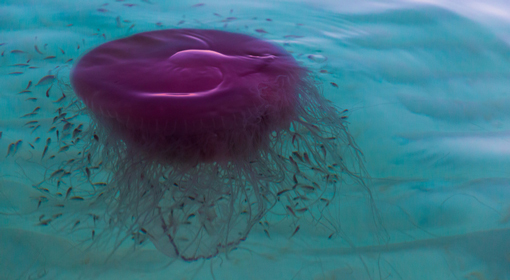
The role of sea jellies in supporting biodiversity in the ocean
A great diversity of organisms associate with jellyfish including microalgae (zooxanthellae), trematodes, anemones, crabs, ophiuroids, barnacles and fish. Relationships between jellyfish and their associates include parasitism, commensalism and symbiosis, sensu stricto. We use a combination of field observations, molecular (e.g. genetic) and chemical tracer approaches (e.g. stable isotopes) and laboratory-based experiments to study the relationships between jellyfish and their symbionts. By acting as hosts for a diverse array of associates, jellyfish probably have a major role in supporting biodiversity in the ocean.
Trophic ecology of jellyfish
Sea jellies are voracious predators and can influence the composition and abundance of the zooplankton communities on which they prey. We use a variety of approaches to study trophic relationships of sea jellies, including experimental mesocosms in the field and chemical tracer approaches such as stable isotopes and fatty acids.
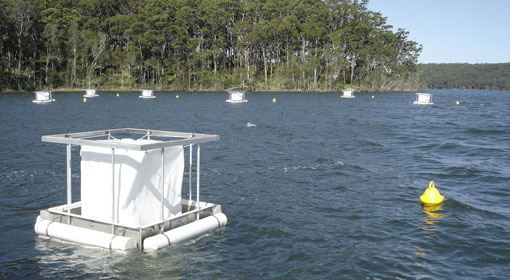
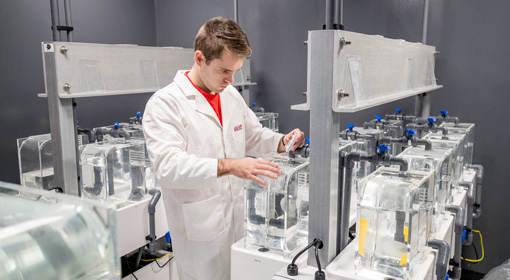
Global trends in jellyfish populations
Claims that sea jelly populations are rising globally pervade the scientific and popular literature and media. We use meta-analyses of existing data sets to test hypotheses about global changes in sea jelly populations. We have discovered that across the world sea jelly populations oscillate in 22-year cycles and are probably not increasing globally. We are now investigating the factors that could be driving the jellyfish cycle.
Irukandji jellies
Irukandji jellies are common in Australia’s tropical waters. Envenomation by Irukandji jellies invokes a debilitating suite of symptoms referred to as ‘Irukandji syndrome’ and people stung by Iruakndji are often hospitalised. Irukandji, therefore, are a major concern for the marine tourism industry.
Climate change is causing many marine species to shift their distribution polewards. The concern is that Irukandji jellies may extend their range into sub-tropical waters and impact the lucrative beach tourism industries of southeast Queensland. Evidence to support or refute this hypothesis, however, is very limited and we cannot yet predict how Irukandji jellies will respond to climate change. We use laboratory-based experiments to test the responses of Irukandji jellies to climate stressors, including warming and ocean acidification. This research will inform us about whether Irukandji jellies are likely to occur in southern Queensland waters in the near future.
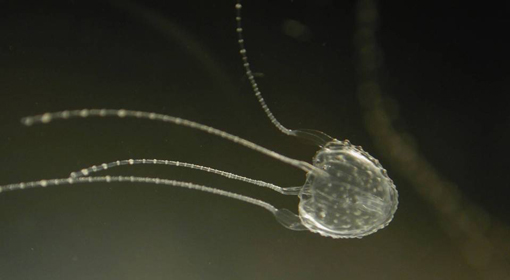
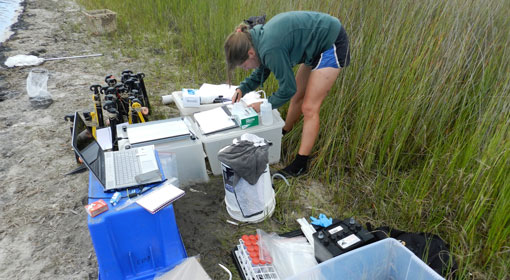
Role of sea jellies in nutrient cycling
Sea jelly populations exhibit ‘boom and bust’ population dynamics that are characterised by a rapid increase in biomass followed by mass decomposition of sea jelly carcasses when blooms collapse. Such rapid changes in sea jelly populations will greatly influence carbon, nitrogen and phosphorus cycling in the ecosystems they inhabit. We use laboratory and field-based experiments to understand how sea jellies influence nutrient cycling. Our research focuses on how decomposing sea jellies influence benthic biogeochemistry and the role of zooxanthellae in modifying nutrient dynamics in sea jellies.